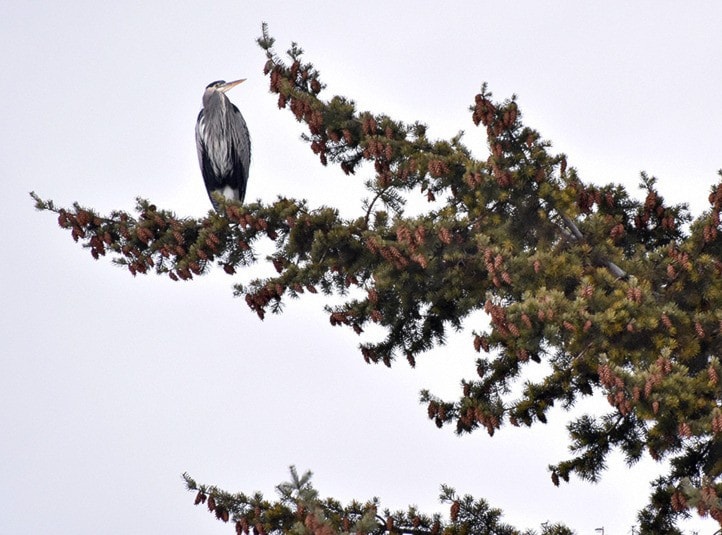The 11th annual Ashcroft and Cache Creek Christmas bird count took place on December 21, and organizer Wendy Coomber says that for the first time the counters were able to spot 40 different species of bird in and around the communities. “We never seemed to be able to break 39.”
Eight people participated in the count, which took place under gorgeous skies and in fairly mild weather. Coomber says that no owls were spotted this year, which is not unusual. “It’s a real bonus when we see them.” However, this year dozens of Chukar partridges were spotted; usually, says Coomber, they are heard but not seen.
“We saw 45 in just one spot; last year we were hunting high and low for them.”
She says that the first bird she saw at this count was a Great blue heron in a tree on Tingley Street in Ashcroft. “And there were piles of Canada geese flying overhead, which isn’t unusual.”
Spotters near the Cache Creek landfill were disappointed in the number of Bald eagles, ravens, and blackbirds at the site. “It’s pretty sterile up there,” says Coomber. “They saw a few Bald eagles, but about half the number they usually see. There were only about 12 eagles, and fewer than 40 each of ravens and blackbirds. Usually we see more than 400.”
Coomber notes that the landfill closure will have a definite effect on area bird populations. “It will be interesting to see what it looks like going forward.”
Christmas bird counts, which take place between December 14 and January 4, have been going on throughout the world for more than a century. In 2015 there were 99 separate bird counts involving almost 3,000 volunteers conducted around the province, and 217 separate species were spotted.
Dr. David Bradley, B.C. program manager for Bird Studies Canada, says the Christmas bird count is a valuable tool in tracking broad trends in bird populations. “This is a really good long-term data set.”
Coomber says that the Ashcroft and Cache Creek numbers have been sent to team leader Karl Ricker in Whistler, who will compile them and send the statistics to Bird Studies Canada, which posts the results on their website (http://www.birdscanada.org/index.jsp). The site notes that birds are excellent indicators of how the environment is doing, and Coomber says that amateur bird counters are a key factor in tracking bird population trends.
“People ask me why we do it. It’s a snapshot of the day, and a litmus test to see if numbers are up or down.”
